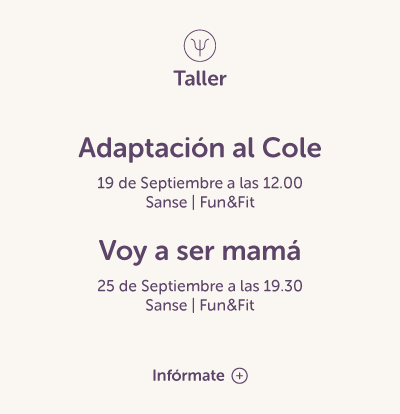Implementing thoughtful restroom design is crucial for any establishment aiming to provide a welcoming atmosphere. Incorporating features that accommodate everyone, including those with disabilities, is not merely a good practice; it is a requirement that can protect against compliance fines. Attention to detail in facilities can significantly enhance user experience and promote inclusivity.
One integral aspect of accessible bathrooms is the selection of appropriate equipment, such as lever handles. These ergonomic options decrease the difficulty of use for individuals with limited mobility, ensuring that your facilities are both functional and inviting. Prioritizing accessibility reflects positively on your business, paving the way for improved customer satisfaction and loyalty.
Understanding ADA Regulations for Plumbing Fixtures
Compliance with access regulations is a fundamental aspect of restroom design in any commercial setting. These accessibility codes ensure that all individuals, regardless of their physical abilities, can use facilities without obstacles. Retrofitting existing spaces is often necessary to meet these standards, allowing businesses to avoid costly compliance fines.
Key features that promote inclusivity include lever handles and touchless fixtures, which enhance user experience and maintain hygiene. Lever handles allow for easy operation without requiring grip strength, making them suitable for a wide range of users. Touchless options minimize contact, further promoting accessibility for those with mobility challenges.
Adopting inclusive plumbing solutions not only adheres to legal obligations but also demonstrates a commitment to serving all customers. Considering these regulations during restroom design can foster an environment where everyone feels welcome and valued.
Benefits of Installing ADA-Compliant Fixtures in Public Restrooms
Ensuring that public restrooms meet accessibility codes is not just a legal obligation; it also enhances the overall experience for all users. By integrating inclusive plumbing elements, businesses can avoid compliance fines while promoting a welcoming environment. For those looking to upgrade their facilities, retrofitting options such as ada sinks and touchless fixtures are widely available.
Implementing these accessible solutions not only caters to individuals with disabilities but also benefits families, seniors, and other patrons. Thoughtful restroom design contributes to increased customer satisfaction, ultimately driving repeat business. In addition, adherence to modern accessibility standards can improve a brand’s reputation and demonstrate commitment to social responsibility.
By investing in inclusive restroom features, businesses not only comply with legal requirements but also create a more accommodating atmosphere that respects the diverse needs of their clientele. Discover more about these enhancements at https://goldstandardplumbingsocal.com/.
How to Choose the Right ADA-Compliant Plumbing Products
Selecting appropriate plumbing elements that meet accessibility codes is fundamental for any establishment prioritizing inclusivity. Begin by assessing the space and understanding the specific requirements needed for compliance. Sinks, such as ada sinks, play a crucial role in this process. They should not only serve the functional purpose but must also be easily usable by all individuals, including those with disabilities.
Incorporating touchless fixtures enhances usability by minimizing the need for physical contact, significantly benefiting users with mobility challenges. Additionally, consider products with lever handles instead of knobs, as they are easier to operate. Don’t forget to explore options for retrofitting existing structures, which can save costs while achieving the necessary accessibility standards.
Be mindful of compliance fines, which can arise from overlooking any regulation aspect. Taking the time to evaluate all available options will ensure that the space not only fulfills legal requirements but also demonstrates a commitment to inclusive plumbing and accessibility for everyone.
Common Mistakes to Avoid When Implementing ADA Compliance
Creating accessible restroom design is crucial for ensuring inclusivity in any establishment. However, certain pitfalls can jeopardize compliance and the user experience. Here are common errors to avoid:
- Ignoring Local Regulations: While federal guidelines are comprehensive, local regulations can differ. Familiarize yourself with local compliance requirements to avoid potential compliance fines.
- Inadequate Space Planning: Ensure there is sufficient room for maneuvering, especially for users with mobility aids. A cramped restroom can lead to uncomfortable experiences and non-compliance.
- Using Non-Compliant Fixtures: Choose appropriate options like touchless fixtures and lever handles instead of knobs, which can be difficult for some users to operate efficiently.
- Neglecting Maintenance: Regular maintenance of ADA sinks and other features is necessary to ensure functionality. Broken or malfunctioning equipment can create barriers rather than enhance accessibility.
- Focusing Solely on Retrofitting: While retrofitting existing facilities is commendable, it’s also vital to consider new projects from the ground up. Integrated inclusive plumbing solutions prevent future compliance issues.
- Overlooking Signage: Clear, visible signage is essential for guiding users. Ensure that signage meets size, color, and font standards to enhance clarity.
Avoiding these mistakes will not only aid in achieving compliance but also enhance the restroom experience for all users. Prioritizing accessibility in your design and maintenance strategies fosters an inclusive environment and reflects positively on your organization.
